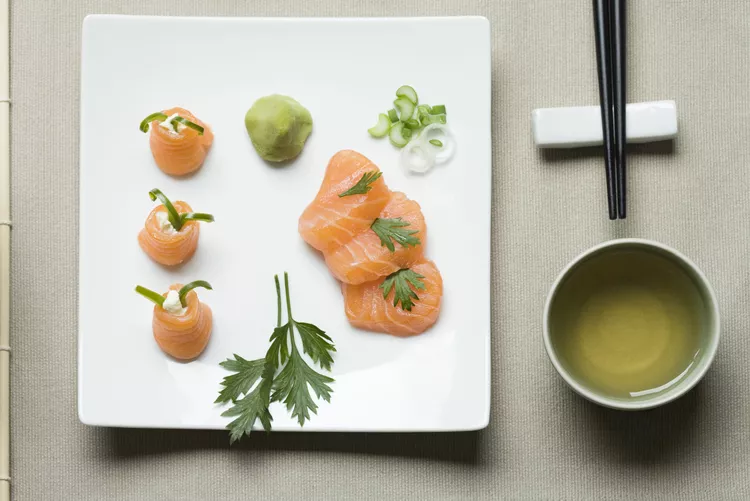Summary
A Step-by-Step Guide to Japanese Table Manners and Chopstick Etiquette
Whether dining with new Japanese friends at home or attending a business lunch, adhering to specific Japanese dining etiquette will enhance your experience. There’s no need for anxiety; your hosts will understand that you may be unfamiliar with some customs and etiquette in Japan.
Start by greeting in Japanese, offering a respectful bow, and then relax while following these tips to enjoy an authentic cultural experience you’ll cherish.
How to Use Chopsticks Properly
Mastering chopstick use is essential for Japanese dining etiquette, especially during formal occasions and business meetings. If you’re not adept with chopsticks, it could raise questions about your capabilities in other important areas. One should not always rely on Western utensils.
Initially, lift the chopsticks with both hands, adhering to the fundamentals of chopstick etiquette. Remember that chopsticks are utensils just like forks and knives; therefore, avoid playing with them, pointing or rubbing them together!
If no serving utensils are available during a family-style meal—common when visiting someone’s home—take food from the bowls provided by using the thick ends of the chopsticks, which do not touch your mouth.
Observe These Rules for Using Chopsticks Properly:
- Avoid pointing your chopsticks at someone while talking.
- Do not wave your chopsticks over food on the table.
- Do not indicate particularly delicious dishes with your chopsticks.
- Do not suck sauces off your chopsticks.
- Do not rub your chopsticks together or play with them unnecessarily.
- Do not lift food by stabbing it with your chopsticks.
The Most Important Rule of Japanese Dining Etiquette
Absolutely never pass food with your chopsticks! This act evokes the memory of passing cremated bones between chopsticks during funerals. Additionally, avoid sticking your chopsticks vertically into a bowl of rice; this is another morbid gesture that can dampen the dining experience.
Japanese Table Manners
Upon being seated, many restaurants will offer a wet towel. Use the towel to clean your hands, not your face or neck. This is especially advisable if you’ve engaged in a lot of handshaking—afterwards, fold the towel and set it aside.
Begin your meal by saying “Itadaki-masu”, which translates to “I humbly receive.” Learning a few basic Japanese phrases can significantly boost your confidence.
Refrain from pouring soy sauce directly on your food, especially plain rice. Instead, pour a small amount of soy sauce into a separate bowl and dip your food into it. You can always add more soy sauce as needed, but avoid wasting sauce or leaving food behind.
For ramen or soup, feel free to sip directly from the bowl. Lift the bowl with your other hand; do not hold chopsticks and a small bowl in one hand. Be prepared to hear slurping sounds around the table. Unlike in Western cultures, slurping your soup is not only acceptable, but it indicates enjoyment!
Cleaning your plate, including all the rice, is valued in Japanese dining etiquette—do not waste food you have served yourself.
After the Meal
Upon finishing your meal, express gratitude by saying: “Gochisosama-deshita” or simply “Gochisosama” for a less formal scenario.
If you used disposable chopsticks, neatly place them back in their small bag and fold the end. Otherwise, position them sideways on your plate as opposed to pointing them at the person across from you. Setting your chopsticks next to your bowl signals that you are still eating.
In a restaurant setting, it is common for the host or highest-ranking individual to pay, adhering to the concept of saving face. When paying, place your money on the designated tray rather than handing it directly to the server. If there is no tray available, both hands should be used when giving and receiving money.
Tipping in Japan is generally not practiced and often seen as rude—there’s no need to leave extra!
Eating Sushi with Proper Japanese Dining Etiquette
Sushi is standard fare during numerous business lunches. When consuming sushi, pour only a small amount of soy sauce into the provided bowl; leaving a bowl full of used soy sauce is regarded as wasteful.
When dipping nigiri, flip it so that only the fish touches the soy sauce. Letting rice float in the dipping bowl is improper etiquette.
Familiarize yourself with sushi terminology in Japanese to enhance your understanding of what you’re enjoying. Knowing a little about sushi’s history will further enrich your culinary experience.
Japanese Dining Etiquette for Drinking
Meals are often accompanied or followed by drinks, such as beer or sake—never drink alone! Wait until everyone’s glasses are filled, then someone will propose a toast or simply say kanpai! meaning “cheers” in Japanese. Raise your glass in return and drink. Should your hosts empty their glasses, you ought to try to do the same.
The Japanese frequently pour drinks for one another—you should participate as well. Refill the glasses of those around you, and refrain from pouring your own drink. Familiarize yourself with basic Japanese drinking etiquette before finishing your drink.
Tip: sake is pronounced as sah-keh, not sah-key.
Things to Avoid in Japanese Dining Etiquette
- Do not blow your nose at the table; if needed, excuse yourself to the restroom or go outside instead. Sniffling at the table to avoid blowing your nose, however, is acceptable.
- Avoid pointing at people with either your chopsticks or your finger while making a point.
- While bringing a gift is a courteous gesture when invited to someone’s home for dinner, be cautious to avoid giving anything in sets of four or nine. These numbers are phonetically similar to the words for death and suffering and carry superstitious connotations.





